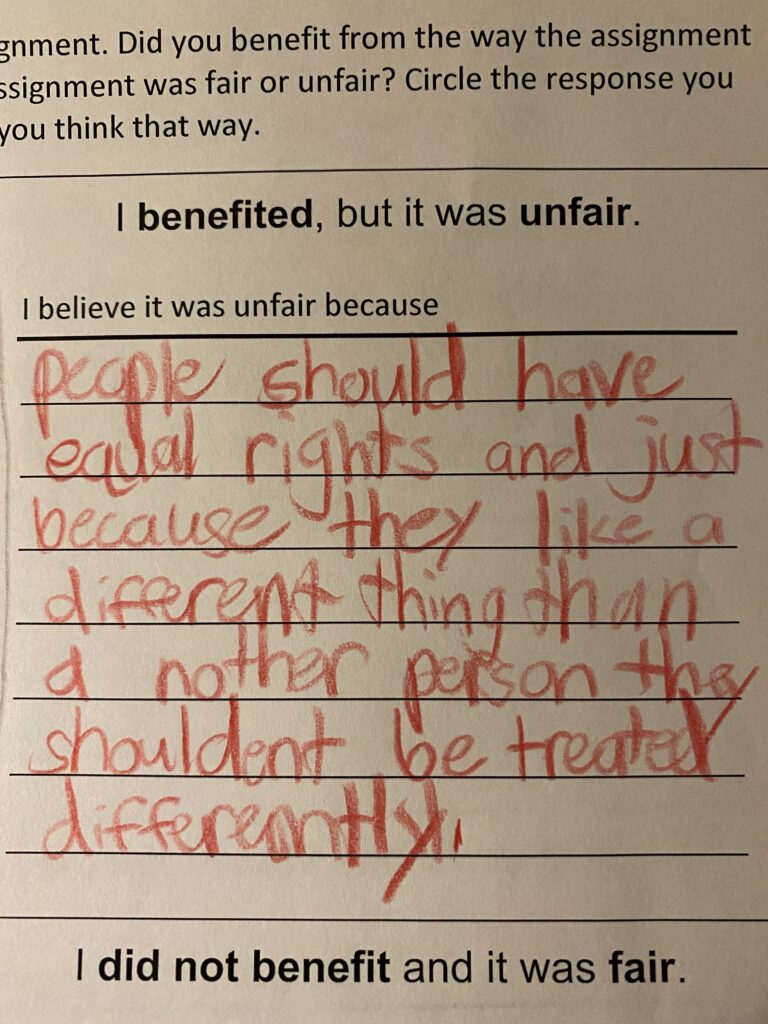My social studies lessons were loaded with dates and names my first few years teaching. While there are some dates and names which every student should learn, my thinking shifted a few years ago. Instead of focusing on dates and names, I wanted students to better understand big concepts and themes in history.
Since I teach in Pennsylvania, students learn about William Penn, a quaker, who founded Pennsylvania, in part, to escape religious persecution in England. The big theme I want my students to gain from this is that people have been treated poorly because of their beliefs, and at times find ways to escape that persecution. This is a big theme that is not only applicable to William Penn but so many other areas of history.
The trouble was how do I help 10-year-olds better understand the injustices William Penn and others faced in England because of the King? As usual, when I’m at a loss, I turn to ice cream. It is usually Ben and Jerry’s The Tonight Dough, but I digress.
Every year when I teach William Penn, I write two different types of ice cream on the board. Students write their name under the flavor they prefer. Then anybody who did not chose “my” favorite flavor is given less homework that night. Fourth graders get passionate about ice cream and homework. (Don’t worry, students who do not have to do the homework, do it the next night.)
The next day we do a four corner activity. I give students a paper with four boxes. The boxes are:
- I benefited and it was fair because…
- I benefited and it was unfair because…
- I did not benefit and it was fair because…
- I did not benefit and it was unfair because…
Students are given a few minutes to write in one of the boxes based on whether they benefited from the ice cream/homework activity and whether they thought it was fair or unfair. Then they move to a corner of the room which corresponds with their box. Almost every year, there are students at three of the corners but nobody at the “I did not benefit and it was fair” corner. They talk to the other people at their corner, and then we share out and have a class discussion.

For a few years, the activity would then move into the lesson about William Penn. We would read about him in our social studies books, answer some questions, etc. This year, however, I did something different. After our class discussion, I asked students to go back and write in red pencil any changes or additions they would make to their original thoughts. It was a way for them to reflect on any new ideas they had based on the class discussion.
Some students stayed in the box they originally chose, while others decided that what they originally thought was fair was unfair. I asked one student why he moved from “I benefited and it was fair” to “I benefited and it was unfair.” He told me that he changed his mind after hearing one of his classmates talk about how it was unfair to do homework simply because his favorite ice cream isn’t vanilla. He said, “Mr. Rashid, hearing him say how unfair it was really made me think. I had only thought about how it affected me. Now I’m thinking about the people who had to do more homework. It doesn’t seem fair anymore.” It was a bit of empathy in the middle of the lesson that will help him relate to William Penn’s struggles.

This has worked so much better than simply reading a text about William Penn and having students memorize dates and names. Students are invested and have some background knowledge of injustice. They are using reading, writing, speaking, and listening skills.
Every lesson can improve, but I feel this is a really great way to introduce a pretty deep concept to fourth graders. Although, it could be better if we actually ate ice cream during the lesson. Heck, maybe Ben and Jerry’s can make a William Penn flavor sometime soon. An ice cream loving teacher can dream, can’t he?
